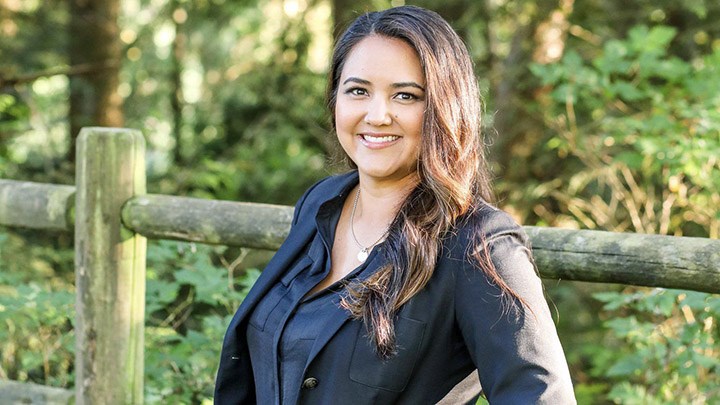Researchers in a study on maternal overdose have found that having a child apprehended made a mother 55 per cent more likely to have an unintended non-fatal drug overdose. For Indigenous women, the odds of reporting an unintended overdose are double — when compared to non-Indigenous women who had not lost custody of their children.
“I would say that I was saddened by these findings but not surprised,” says Brittany Bingham, a co-author of the report and member of the shíshálh Nation.
The findings, published this fall in the International Journal of Drug Policy, are the result of two studies conducted between 2010-2018, in which more than 1,000 women from across Canada participated.
Bingham is the Director of Indigenous Research at the Centre for Gender and Sexual Health Equity at the University of British Columbia (UBC). She says that the impacts of ongoing colonization on Indigenous women mean they experience more barriers to keeping their kids than their non-Indigenous peers.
“We seem to find in this research that unfortunately many of the Indigenous women are facing additional barriers and harder circumstances,” Bingham says.
According to data published by the Ministry of Children and Family Development, 67 per cent of children in government care are Indigenous, even though Indigenous youth under 15 make up just 10 per cent of the province’s total population under 15. It’s been reported that there are more Indigenous children in care today than there were at the height of the residential school system, which operated between the 1830s and 1996.
Meaghan Thumath, first author of the report and assistant professor at the UBC School of Nursing, says the impact of having a child removed can cause women with underlying substance use disorders to relapse. It’s also important for those who create policy for the child welfare system to consider the impact of child apprehension on mothers, she says.
“Child reunification is an essential service,” she said in a press release on Nov. 19. “Denying a mother access to their children can result in profound grief and loss, exacerbating substance use and increasing risk of overdose.”
Thumath was motivated to study the effects of child apprehension after working with pregnant women and new mothers as a street nurse and at the Sheway Pregnancy Outreach Program, in downtown Vancouver, she says.
“Many of the women I worked with would work extremely hard, do everything they could to convince the system that they were ready to parent,” says Thumath.
“We [as support staff] would all think that things were going very well,” she says, and that they would get to keep their kids.
“[But] they would come back empty handed.”
Colonial legacy of child apprehension
Bingham says that the child welfare system and other colonial institutions have disrupted the matriarchal structure of many Indigenous communities. Child separation, she says, is creating a “huge void” in communities’ knowledge sharing systems, which they are trying to reclaim.
“Indigenous women continue to move through these situations where it’s been one thing after another put in their way from this colonial agenda,” says Bingham.
“Somehow Indigenous women continue to be strong and survive.”
These instances of separation and their resulting health issues create a “ripple effect” in families and communities, says Bingham.
A policy brief from the Centre states that “Indigenous People’s child custody removal is deeply embedded in ongoing racist policies and colonial history of forced family separation and genocide.”
This legacy includes the lasting impacts of residential schools and the 60’s Scoop. Given Canada’s historical record of systematically removing Indigenous children from their families the threat of child apprehension still affects Indigenous mothers to this day.
“The threat of child apprehension is causing Indigenous women to feel a constant sense of surveillance,” says Bingham. “That creates trauma in and of itself.”
The report recommends that social workers and health care staff receive training in overdose prevention, cultural safety and trauma-informed practice to support family reunification.
“Urgent action is needed that decolonizes and overhauls child welfare systems to make space for Indigenous self-determination and community responses,” said Bingham in a press release from UBC.
Solutions to maternal overdose
Thumath says that the research shows two things. The first is that the Canadian child welfare system needs to change dramatically. The second is that Indigenous mothers need to be provided with much more support in the event that their children are taken from them.
“In the short term while we work on transforming the child welfare system, we also have to immediately support women who have had their children removed,” says Thumath. “It should be absolutely a last resort, but if they have to be removed we need to wrap supports around that woman right away.”
The report itself calls for immediate large scale systemic change of the child welfare system. Among the urgent recommendations it makes, it states that “large scale systemic transformation, Indigenous self-determination and decolonizing approaches are essential to support Indigenous women’s rights as mothers.”
It also states that the number one reason for child apprehension in British Columbia is poverty.
Sophie Pierre, one of the co-authors of the report is the former chief of ʔAq̓ am, a member band of the Ktunaxa Nation. She says that in her experience, it isn’t enough to simply shift child welfare jurisdiction to Indigenous communities because the system itself doesn’t change in that process.
“We need to turn our thinking away from funding solutions that have proven to not work,” says Pierre. “We need to invest in families…[ so we] don’t have one generation always creating fodder for the next generation.”
Pierre says that today’s funding models focus on putting “band-aids” over problems rather than investing in supporting families so they can keep their kids. She says that she is both hopeful about the change that is to come, and frustrated with how these issues are being handled.
“You’re talking about lives,” says Pierre. “I don’t want to be talking about programs and formulas when you’re talking about babies and mothers.”


